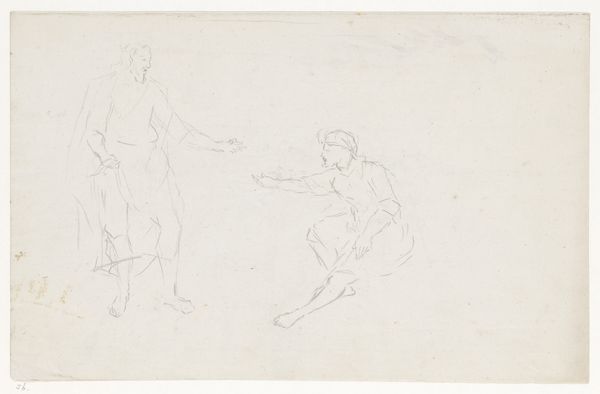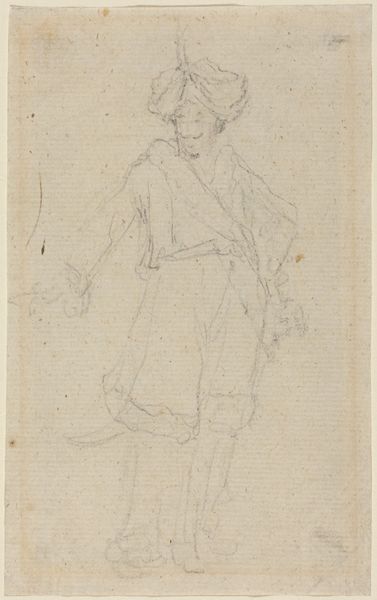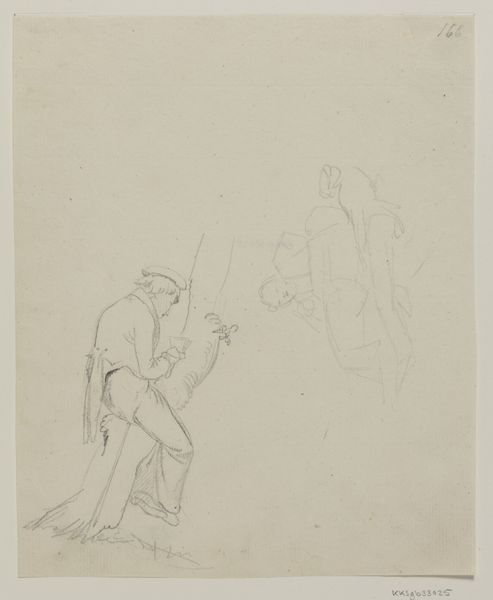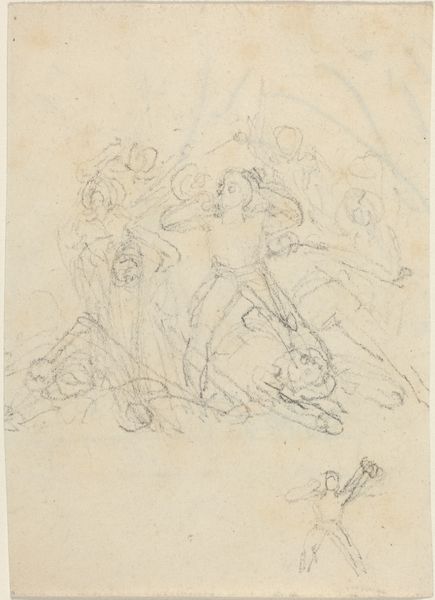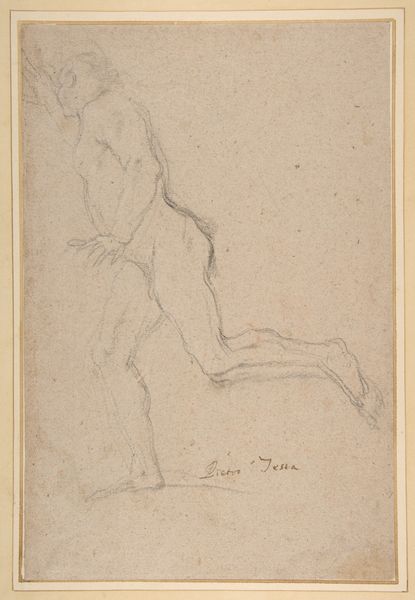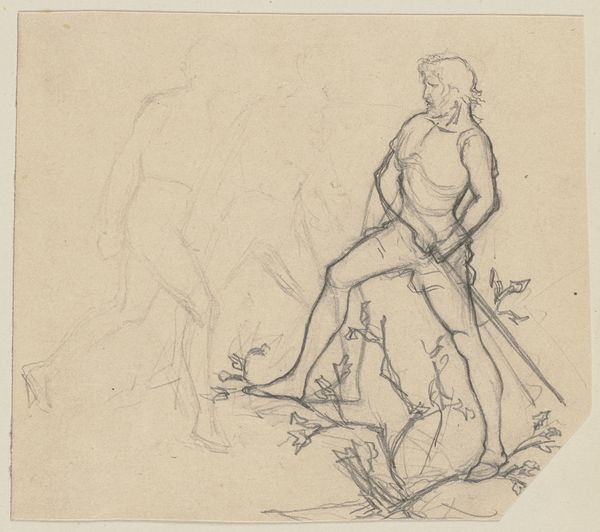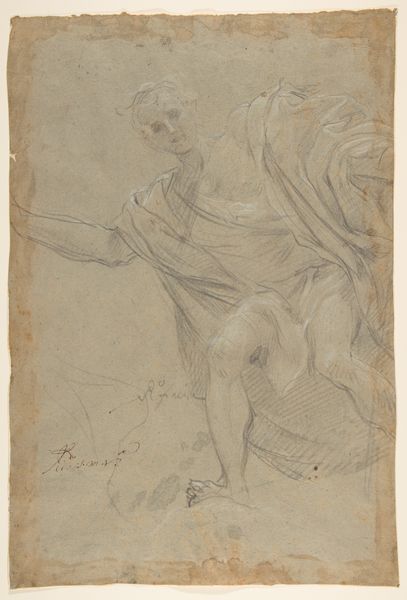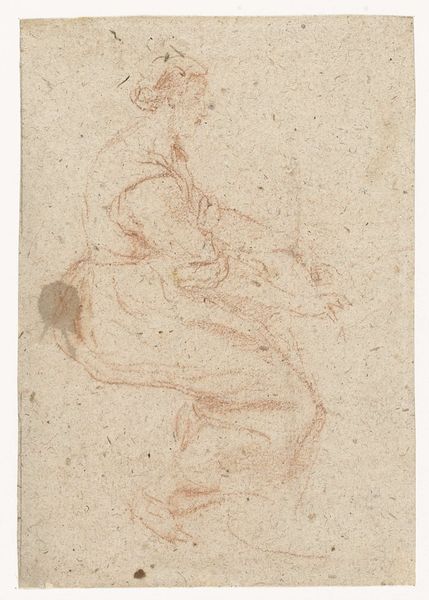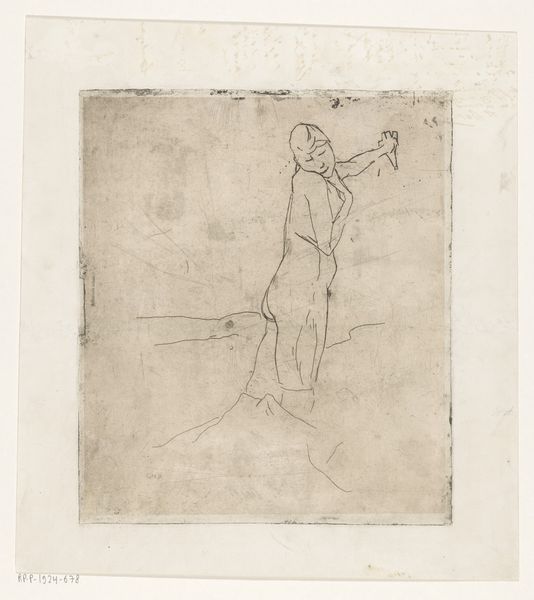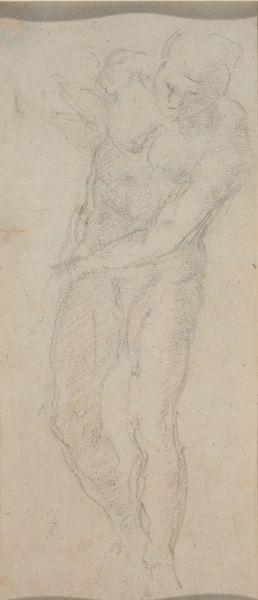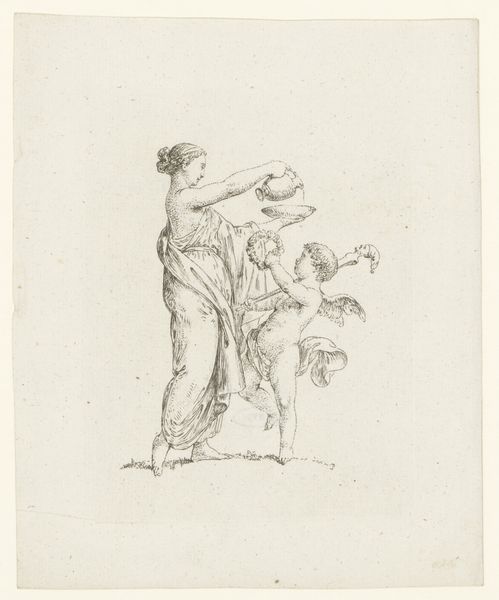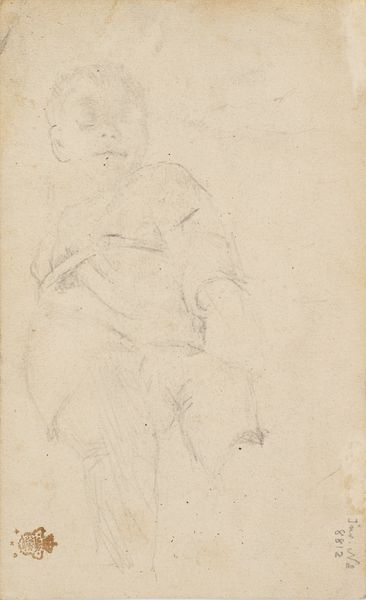
Dimensions: height 295 mm, width 195 mm
Copyright: Rijks Museum: Open Domain
Curator: This delicate pencil drawing is titled "Javaanse krijger," or "Javanese Warrior," and it dates to between 1779 and 1785. The artist was Jan Brandes, a Dutch clergyman, artist and traveler to the Dutch East Indies. Editor: Wow, there's an almost ethereal quality to it, isn't there? The way the figure emerges so lightly from the background. It’s like he’s a memory, captured in the faintest graphite. Curator: Indeed. Brandes was traveling and documenting the people and cultures he encountered, reflecting a time when the Western gaze was attempting to classify and understand other cultures. But it’s interesting to see this raw depiction. Editor: I find myself drawn to the warrior’s stance. There is this beautiful balance of tension and serenity, as if he’s poised between action and stillness, observation and reflection. Curator: It is an interesting contrast. These depictions served not just as documentation but also as a way of shaping the European public's understanding—and often misunderstanding—of Southeast Asia and its peoples, sometimes reinforcing colonial narratives. Editor: So, even the sketchiness is kind of… performative? It suggests, in its very incompleteness, a place only half-known. A land that they don’t understand. Is that pushing it too far? Curator: Not at all. The lack of detail invites interpretation, filling in the blanks based on the viewer's preconceptions and expectations. It certainly complicates Brandes’s own perspective and intentions. Editor: Looking at it now, knowing a little more about the colonial context gives this piece an extra emotional layer, the vulnerability that speaks through. Even just these sketched lines of history echo still. Curator: Absolutely, seeing art like this through a more critical lens offers a deeper understanding. Brandes gives us so much more than just a record. It reflects an age where discovery became entangled with questions of power. Editor: And I appreciate that this simple drawing pushes us to grapple with these messy histories—sometimes that is all we can expect from a quiet work of art.
Comments
No comments
Be the first to comment and join the conversation on the ultimate creative platform.
